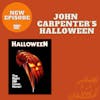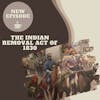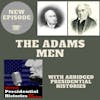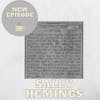John Carpenter's Halloween

In 1978, a young unknown director put together a small independent horror movie that took place on one of the scariest nights of the year: Halloween. The film, named after the holiday it takes place on, went on to become one of the biggest horror movie franchises is movie history.
Join me this week as I wrap up October with a look at the history of Halloween. How did the film come about? Why does it have such staying power? And what influence did it have on movies?
SOURCES:
Bailey, Jason. “The Story Behind the Original Halloween.” Vulture. October 15, 2018. (LINK)
“How Horror Movies Have Changed Since Their Beginning.” New York Film Academy. October 21, 2015. (LINK)
Johnson, David. “See How Americans’ Belief in God Has Changed Over 70 Years.” Time. April 7, 2016. (LINK)
McGlynn, Anthony. “A Complete History of the Halloween Franchise So Far.” Screenrant.com. March 2, 2020. (LINK)
Oliver, Myrna. “Debra Hill, 54; Pioneering Woman in Hollywood, Co-Produced Halloween,” Los Angeles Times. March 8, 2005. (LINK)
Phipps, Keith. “Into the Halloweenverse: The Many Confusing ‘Halloween’ Sequels Explained.” GQ.com. October 13, 2021. (LINK)
Halloween Domestic Gross Figures. Box Office Mojo. (LINK)
Skal, David J.. Fright Favorites: 31 Movies to Haunt Your Halloween and Beyond. United States: Running Press, 2020.
Welcome to Civics and Coffee. My name is Alycia and I am a self-professed history nerd. Each week, I am going to chat about a topic on U.S history and give you both the highlights and occasionally break down some of the complexities in history; and share stories you may not remember learning in high school. All in the time it takes to enjoy a cup of coffee.
INTRO MUSIC
Hey everyone, Happy Halloween!
If you listen to this on release day, then I am a little early in my holiday salutations, however this is the last episode of spooky season and so I wanted to be the first to officially wish you good tidings on my favorite holiday of the year.
If you’ve listened to the podcast for a while, then you know I am a big fan of all hallow’s eve and try to give you a spooky episode or two for the month of October. In fact, when I launched the show in 2020 I was lucky in that Halloween fell on release day.
I mentioned during the episode dedicated to the creepy holiday the movie for which I will be discussing in detail today - the titular classic John Carpenter’s Halloween.
Filmed on a shoestring budget in under a month, this ninety minute example of understated suspense catapulted the horror genre into a new realm and spawned many a copycat.
So today, I am talking about the film - Halloween. How did it come together? Why did it resonate so well with audiences? And why is it still such a big deal in horror?
Grab your coffee peeps, lets do this.
To start this episode, I feel the need to be transparent. Halloween is in my top three horror flicks. I am a simple horror girl; I thrive on the suspense and terror that is the slasher flick and so for me, Halloween, Friday the 13th and Scream are the pinnacles of the slasher genre. So while I usually try to stay as neutral as possible whenever putting these episodes together, if you sense a bit of nerdy excitement throughout the show, congratulations. You are picking up on my serious fangirl vibes. Also - of course - if you haven’t seen the film, be warned; there be spoilers ahead.
In the off chance there is someone out there who has never seen nor heard of the 1978 classic, John Carpenter’s Halloween tells the story of teenage babysitters who are stalked and murdered one by one during Halloween night. The perpetrator? A man who murdered his sister years prior and who had recently been a resident of an insane asylum. Like all decent horror films, the premise is simple and relatable.
Prior to Halloween, many horror films tended to focus on easily unbelievable things. Universal Studios had a run in the thirties and forties with their monster flicks and there was also a string of more science fiction based horror such as the Attack of the Fifty Foot Woman or Godzilla. Alfred Hitchcock, often seen as the master of horror, did a magnificent job in introducing a personable maniac in Norman Bates as the antagonist in the epic Psycho, but even Bates was relegated to a deserted hotel, far away from the normal hustle and bustle of life. The genre switched again in the sixties and seventies and focused on the occult, telling stories of possession and demonic spirits. Think the Exorcist, Rosemary’s Baby, The Omen and so on. Given this was a period when a majority of Americans reported believing in God, these stories reached a new level of terror to unsuspecting audiences.
However, it was Halloween that helped cement the path to my personal favorite, the slasher movie. It cannot claim credit as the first slasher flick, as The Texas Chainsaw Massacre, released in 1974, is often seen as the first chapter in the slasher lexicon. But it seemed to bring all of the various pieces together to create one perfectly terrifying storm. So just how did the idea for Halloween develop?
Irwin Yablans was a young man who had been in the film business for a few years in low level positions and wished to produce his own movie. Yablans was an experienced distributor and found success in the overseas market. He is credited for coming up with the idea for the film, which started as a story about a string of babysitters who are murdered one by one. In Yablans mind, the concept of someone stalking a babysitter was something that could hit home to everyone as almost everyone out there had either been a babysitter or were watched by one in their youth.
Yablans, who had decided he was ready to move from the role of distributor to producer, already knew the director he wanted for the film - the young, unknown and thus far untested John Carpenter. Yablans met Carpenter when he watched the new director’s movie The Siege. If that doesn’t sound familiar, that’s because it was re-released with a new, better known title: Assault on Precinct 13. Yablans apparently loved Carpenter’s story of a police precinct under siege by criminals so much that he offered to distribute the film overseas, leading to its placement in the United Kingdom’s film festival.
Yablans excitedly shared his story concept with Carpenter and got him to agree to do the film under a few conditions: Carpenter would be paid $10,000 up front, allowed full creative control, be eligible for profit participation and could bring on his then-girlfriend Debra Hill as a co-producer. Yablans agreed and so, Carpenter and Hill took the small, incomplete idea of a string of babysitter murders and tried to turn it into a fright fest worthy of the big screen. Debra Hill, who had minimal credits at this point, wrote the overarching story that we know as Halloween. It was rare to have women behind the camera outside of the makeup or costume department and it was apparently John himself who told Hill that if she was interested in making movies in a producer or director capacity, her best way in would be as a writer.
Once the script's draft was complete, Carpenter went in and fleshed out the lore - the history, if you will, of the masked maniac referred mostly as The Shape. And just how did Carpenter come up with a murderous child who grows up to become a psychopath? A visit to the local sanitarium. When Carpenter was attending Western Kansas University, he enrolled into a psychology course. Part of that course involved a visit to the local county sanitarium. As he was making his rounds, Carpenter noticed a boy who, as the famed director later described, looked to be pure evil. This memory was apparently so haunting that when it came time to write the details of Michael Myers’ backstory, Carpenter pulled from his real life experience. Drawing on this haunting visit, Carpenter and Hill delivered a script in about two weeks.
Yablans had given Carpenter all of the previously mentioned concessions on the condition that the inexperienced director could complete the film with a paltry $300,000 budget. Even for an independent film in the seventies, this was a shoestring budget. And though Carpenter agreed to the terms of the deal, there was only one small problem - the funding hadn’t actually been secured. Yablans went to work and was able to convince Moustoupha (Moose ta fah) Akkad to invest in the film.
The supposed original title of the film was The Babysitter Murders. Irwin Yablans later refuted this story on the Netflix series The Movies That Made Us, but I couldn’t find anywhere that script writers John Carpenter and Debra Hill refuted this story, so I am going to leave this for you, dear audience, to decide. At some point during the development process, it was decided the film shouldn’t take place on just any old night of the year - but on the scariest and creepiest of them all - Halloween. And, if you believe the often repeated origin story of how the film came to be, it was once the team decided to place their story within the frightful holiday that the film gained itself a brand new name - Halloween.
Not someone to miss an opportunity, Yablans hoped to expedite filming to get the movie into the theaters in time for the movie’s namesake holiday. And so, in the spring of 1978, a ragtag group of filmmakers set up in the quiet town of Pasadena California to create their fictional sleepy midwest town of Haddonfield, Illinois. The largest star attached to the movie was the character actor Donald Pleasance, who received $20,000 for just five days of work. But of course, it was the young up and coming actress with an undeniable hollywood heritage who was placed in the starring role - the one and only Jamie Lee Curtis.
The daughter of film legends Tony Curtis and Janet Leigh, the choice of Jamie Lee was thanks both to her talents and to the very real tie to one of the most classic horror films in history. It was Jamie’s mother Janet Leigh, afterall, who fell victim to Anthony Perkins’ Norman Bates in Alfred Hithcock’s classic Psycho. What better way to pay tribute to the thriller icon?
Shooting began in May 1978 and was shot in just twenty two days. Filming in the California spring on a more than modest budget, the props department had to get creative. There were several problems to solve: how to make Pasadena in the spring look like fall in the midwest; where were they going to find pumpkins that were very much out of season? And just what costume was appropriate for The Shape that would be wreaking havoc on the young babysitters? The production crew used just three real pumpkins, opting to paint green gourds to make up for their shortage. Supplies were so tight that the crew took to scooping up their prop leaves to use over and over again.
And the notorious mask? An altered Captain Kirk mask. While the production team had picked up a clown mask to play on The Shape’s earlier crimes, once the crew saw the emotionless, blank stare of the Captain Kirk mask, they knew they had a winner.
The original game plan for the film was to screen it for a big studio who Irwin Yablans hoped would purchase and pick up for distribution. However, all of the major studios passed on the flick and so Yablans had no other alternative than to figure out how to distribute the film himself. Now, for my younger listeners, let me put this into a bit of context for you. In 1978, there was no streaming. So this meant no YouTube; no Hulu. No TikTok. If you wanted your film to be seen by anyone, you had to find either a major studio or a theater willing to show it. With this in mind, it’s pretty amazing that Yablan was as successful as he was in getting the movie out. Still aiming for a Halloween release, Yablans chose the small venue of Kansas City to roll out his independent horror flick and got the film screened just under his self-imposed deadline, releasing the film on October 25, 1978.
The film opened small, but performed fairly well. And before he knew it, box office receipts were doubling week over week. Yablans capitalized on this minor success and convinced larger markets - like Chicago - to give the movie a chance. While early reviews of the film were lackluster, there were enough who enjoyed the suspense and what the movie was trying to do. However it seems as though it was really word of mouth that helped propel the movie into superstardom.
Halloween continued to perform so well that the film was picked up in even larger markets and spent a remarkable 114 weeks in the theater. In an age where we are lucky to see a movie last more than a couple of months, it is rather amazing that Halloween had such staying power. And people kept coming in droves as the theater may be the only opportunity to see the film as the VHS Videocassette had just been introduced a year before Halloween’s release.
Halloween went on to break world records, becoming the most successful independent film in history - a record it held for over twenty years. Grossing nearly fifty million dollars in box office receipts, Halloween made over 150% of its initial budget, certifying it as a smash hit. The film stayed in theaters through Halloween in 1979 and 1980, only to make its television debut in 1981 - just in time for the sequel.
Since its original release, the Halloween franchise has turned into a money making horror machine. Not planning on creating an unkillable serial killer, Carpenter did his best to kill off Michal Myers in Halloween II, hoping this would be the end of the story. However, audiences seemed addicted to the villain and when Carpenter tried to drive the story into a different direction, focusing on an anthology instead of one singular character story, people were not happy. Ever the creative mind, Carpenter decided to end his involvement in the franchise and sold his rights to the story and character.
And what a ride it’s been. The film itself currently has thirteen total iterations, with the latest - and maybe final - chapter dropping earlier this month with Halloween Ends. And while it wasn’t the first slasher flick to terrorize audiences, it nevertheless set the tone for what a good scare could do. Halloween placed the horror right on main street, USA. Where anywhere you turned, evil could be lurking. This was different than its predecessors; even Texas Chainsaw Massacre, which arguably initiated the modern version of the slasher movie, took place in a remote location - far removed from american neighborhoods and arguably an avoidable situation. Halloween, however, could happen to your neighbor down the street. Or to you.
Halloween was perhaps even more terrifying considering the state of the country in 1978. A string of serial murderers were making the news - from Ted Bundy to John Wayne Gacy - and perhaps the most terrifying thing of all was how incredibly normal they looked. Halloween really played on his ever present fear that nowhere and no one was safe. Ever. It’s impact was immediate, with studios greenlighting films like Friday the 13th and Nightmare on Elm Street at least partially due to the massive success of Halloween. The film arguably cemented the subgenre of slasher into the annals of horror history and proved there was an audience for that edge of your seat, terrifying experience of watching a lunatic stalk teenagers on the big screen.
Beyond being a powerhouse franchise, it made the careers of several of its key players. John Carpenter is, well, John freaking Carpenter. He has directed over thirty films including Big Trouble in Little China and The Fog. His co-producer and writer Debra Hill went on to enjoy a successful career behind the camera, serving as writer and producer on films like Clue and Escape from LA. Unfortunately, Hill passed away in 2005 at just 54 from Cancer, but her influence on the industry was palpable as she showed women could be a force in leadership roles on set. And of course, the star, the scream queen for a whole generation, Miss Jamie Lee Curtis. Halloween helped propel Curtis into the limelight, though it initially took a minute. After struggling to find work in the aftermath of Halloween, Curtis starred in a series of other horror films before finally making the jump where she has been delighting audiences with her humor and wit. Never forgetting her roots, Curtis has returned to the franchise a number of times to suit up as horror’s favorite heroine, Laurie Strode, in several sequels.
And what about Halloween gives it its staying power? I, for one, think its the simple, relatable story and the lack of gore, considering the subject matter. A lot of the kills that happen on screen are shown in the shadows, leaving the audience to imagine what was really going on. This understated horror really helped terrify audiences and made it a movie that stays with you long after you’ve left the theater.
Like them or love them, horror movies are here to stay. Here’s to hoping I made you appreciate this one just a bit more.
Have a Happy Halloween everyone. I’ll see you next week.
Thanks for tuning and I hope you enjoyed this episode of Civics & Coffee. If you want to hear more small snippets from american history, be sure to subscribe wherever you get your podcasts. Thanks for listening and I look forward to our next cup of coffee together.
OUTRO MUSIC
Listener Favorites
Not sure where to begin? Take a listen to some fan favorites.

























